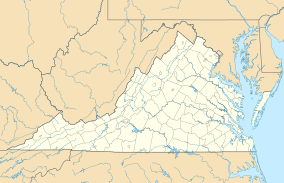C & O Canal National Historical Park
| Chesapeake and Ohio Canal National Historical Park | |
|---|---|
 |
|
| Location | extending from Cumberland, MD to Georgetown, Washington, DC, United States |
| Nearest city | Washington, D.C. |
| Coordinates | 38°53′59″N 77°03′28″W / 38.89972°N 77.05778°WCoordinates: 38°53′59″N 77°03′28″W / 38.89972°N 77.05778°W |
| Area | 19,586 acres (79.26 km2) |
| Established | September 23, 1938 |
| Visitors | 3,937,504 (in 2011) |
| Governing body | National Park Service |
| Website | Chesapeake and Ohio Canal National Historical Park |
The Chesapeake and Ohio Canal National Historical Park is a United States National Historical Park located in the District of Columbia and the states of Maryland and West Virginia. The park was established in 1961 as a National Monument by President Dwight D. Eisenhower to preserve the neglected remains of the Chesapeake and Ohio Canal and many of its original structures. The canal and towpath trail extends along the Potomac River from Georgetown, Washington, D.C., to Cumberland, Maryland, a distance of 184.5 miles (296.9 km). In 2013, the path was designated as the first section of U.S. Bicycle Route 50.
Construction on the Chesapeake and Ohio Canal (also known as "the Grand Old Ditch" or the "C&O Canal") began in 1828 and ended in 1850 when the canal reached Cumberland, far short of its intended destination of Pittsburgh, Pennsylvania. Occasionally there was talk of extending the 184.5-mile canal: for example, an 1874 proposal to dig an 8.4-mile tunnel through the Allegheny Mountains, and there was a tunnel built to connect with the Pennsylvania canal. Even though the Baltimore and Ohio Railroad (B&O) beat the canal to Cumberland by eight years, the canal was not entirely obsolete. Only in the mid-1870s did larger locomotives and the adoption of air brakes allow the railroad to set rates lower than the canal, sealing its fate.
...
Wikipedia


